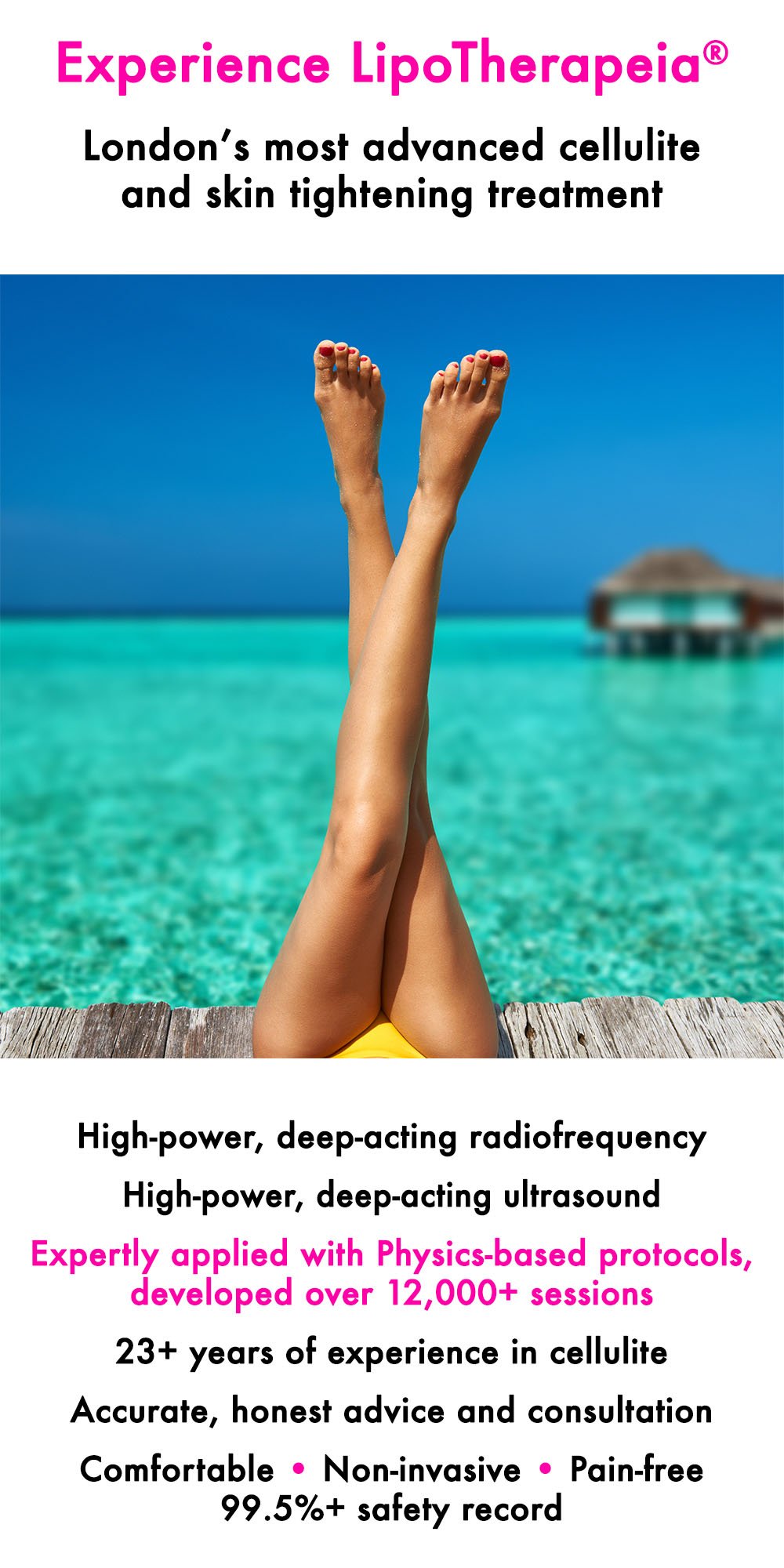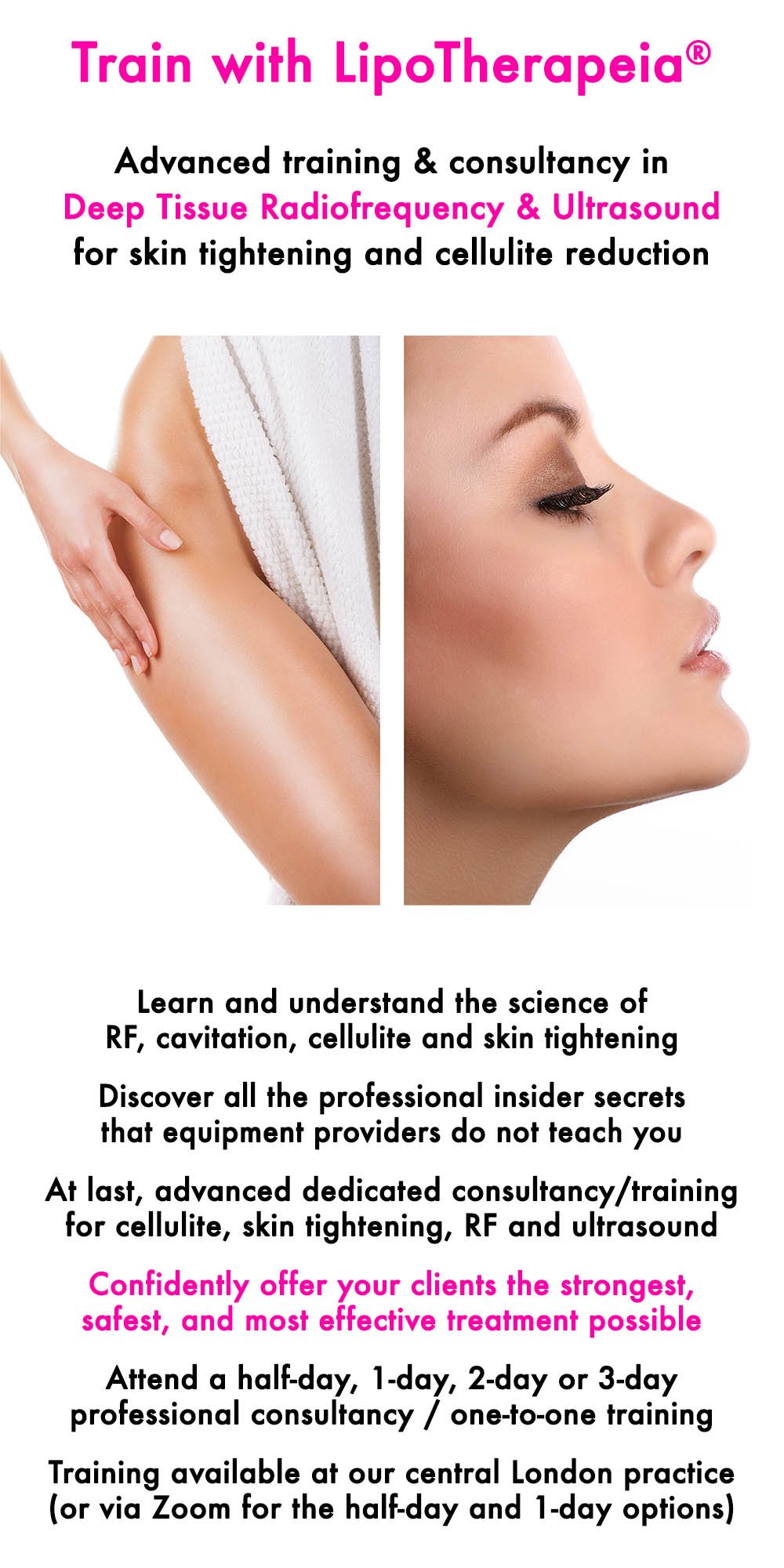Apigenin, cellulite and your thighs
Our Beachy Legs articles are a practical way to share our experience in cellulite and skin tightening, from our London clinic with everyone in the world. Check all our articles here. And if you do live in London, book an assessment, consultation or treatment with us here.
Celery, parsley, fennel, coriander, dill, caraway, anise: aromatic, tasty and good for your thighs
How to screen for anti-cellulite potential in plants
Parsley, celery, apigenin and cellulite
Chamomile, apigenin and cellulite
How to harness apigenin’s anti-cellulite action
What about apigenin in anti-cellulite creams?
Untargeted metabolomics-based molecular networking for chemical characterization of selected Apiaceae fruit extracts in relation to their antioxidant and anti-cellulite potentials
Check our professional consultancy, for a masterclass in radiofrequency, ultrasound cavitation, cellulite and skin tightening
Celery, parsley, fennel, coriander, dill, caraway, anise: aromatic, tasty and good for your thighs
A new study, published a few days ago (December 2023) looked at the potential antioxidant, anti-aging and anti-cellulite potential of a family of aromatic plants called Apiaceae or Umbelliferae.
Common apiaceae plants include ajwain, angelica, anise, asafoetida, caraway, carrot, celery, chervil, coriander, cumin, dill, fennel, lovage, cow parsley, parsley, parsnip and sea holly.
The scientists examined the seeds of 9 of those plants (greater ammi (ammi majus), khella (ammi visnaga), dill (anethum graveolens), celery (apium graveolens), caraway (carum carvi), coriander (coriandrum sativum), parsley (petroselinum crispum), anise (pimpinella anisum), and fennel (foeniculum vulgare).
How to screen for anti-cellulite potential in plants
According to the study, “members of the apiaceae family are recognised as prolific producers of several metabolites such as flavonoids, coumarins, terpenoids, saponins, polyacetylenes and sterols, and are perceived as exceptional sources of pharmaceutically important volatile oils.”
So the scientists screened for content of the above phytochemicals and consequently examined the anti-oxidant and anti-cellulite potential of the seeds of these plants with special software and novel databases (feature-based molecular networks, FBMN).
Parsley, celery, apigenin and cellulite
Celery (apium graveolens) seeds and parsley (Petroselinum crispum) seeds were the two plants out of nine with the highest anti-cellulite potential, according to the phytochemical profile of the plants.
The results revealed “excellent free radical scavenging activity, remarkably increased lipolysis, and decreased adipogenesis”.
With further examination it was shown that apigenin and its glycosides to be the most important actives in both extracts, responsible for their antioxidant activity and anti-cellulite potential.
Chamomile, apigenin and cellulite
Apigenin is a flavonoid also abundantly found in chamomile and is known for its antioxidant, lipolytic and antifibrotic action. However, dried parsley is the richest source of apigenin: dried parsley contains about 45 mg apigenin/gram of the herb, and dried chamomile flower about 3–5 mg/gram and dried celery about 1mg/g.
Of course, this was just a software analysis and not an actual clinical study, but the results check, as polyphenols and flavonoids, such as apigenin, have a major role to play against cellulite, as they act on free radical damage, glycation, inflammation, fibrosis, fat accumulation, skin laxity and water retention, i.e. all seven aspects of cellulite.
How to harness apigenin’s anti-cellulite action
In this blog we always made it abundantly clear that herbs and spices (including but not limited as those of the apiaceae family) are essential against cellulite, as they contain numerous polyphenols and other phytochemicals, which are known to fight cellulite via multiple pathways.
We have also previously identified flavonoids, such as apigenin, as important anti-cellulite actives.
How can you use the power of apiaceae and apigenin (as well as other flavonoids and polyphenols, in general) to help prevent and reduce cellulite? It’s simple:
Have as much as possible of herbs, spices, vegetables, berry fruits and citrus fruits in your diet, including parsley, carrots, celery, celeriac, anise, fennel, caraway, coriander, dill etc. To be honest, we can easily imagine an aromatic stew with all the above in it.
Enjoy an aromatic vegetable juice or smoothie with celery, parsley, dill, fennel and coriander in it - seeds are more concentrated in apigenin but leaves can be eaten in higher amounts
Make a habit of drinking a nice chamomile tea (and alternate with other teas, such as green tea, which is also amazingly good for your thighs, or even fennel tea)
And combine all the above with an overall healthy diet and lots of everyday physical activity and exercise
For faster results have a deep-acting, high-power radiofrequency and high-power ultrasound cavitation, the strongest safe cellulite reduction treatment
For extra help you can apply a real cellulite cream, i.e. one with multiple, high-purity anti-cellulite actives in high concentrations
What about apigenin in anti-cellulite creams?
Apigenin could make an amazing anti-cellulite active, if only it wasn’t too yellow (the same applies to other amazing actives, such as quercetin).
As nobody wants their trousers, skirts, leggings or underwear to turn yellow, I do not see such a cream making to the market anytime soon.
However, if you wish to consume concentrated apigenin, there are quite a few quality supplements nowadays with 100mg per capsule of apigenin, i.e. the equivalent of about 5-7 cups of chamomile tea.
Most people use apigenin in supplement form for relaxation or for its soothing and anti-inflammatory action (chamomile tea is renowned for those), but you may also use it for cellulite prevention (always consult your healthcare practitioner first).
You may also use a cream with equally or more effective actives, such as asiatic acid, asiaticoside, madecassic acid, madecassoside, curcumin, EGCG, caffeine, forskolin =, chlorogenic acid, hydroxyproline and cocoa flavanols, among others.
Untargeted metabolomics-based molecular networking for chemical characterization of selected Apiaceae fruit extracts in relation to their antioxidant and anti-cellulite potentials
Research paper link: https://pubmed.ncbi.nlm.nih.gov/38128622/
Abstract: Stress, obesity, hormonal changes, and aging have been connected to cellulite aggravation resulting in skin dimpled appearance, a very common painless skin disorder with a female preponderance. Several Apiaceae plants have been traditionally used for cosmetic applications. However, their screening for anti-cellulite potential has not been deeply investigated. In this work, UPLC-HRMS/MS coupled with molecular networking was employed to glean a holistic overview of the chemodiversity of the metabolome of nine Apiaceae fruits. Additionally, the extracts were screened for in vitro antioxidant and anti-cellulite activities. Apium graveolens and Petroselinum crispum revealed excellent free radical scavenging activity, remarkably increased lipolysis, and decreased adipogenesis. Furthermore, apigenin and its glycosides were identified to be the major components in both extracts, which might be responsible for the antioxidant activity and anti-cellulite potential. Conclusively, these results signify the potent antioxidant and anti-cellulite properties of A. graveolens and P. crispum fruit extracts, holding potential for the development of plant derived products for cellulite management.
Check our professional consultancy, for a masterclass in radiofrequency, ultrasound cavitation, cellulite and skin tightening
Do you want to deeply understand radiofrequency, ultrasound cavitation, cellulite and skin tightening? Attend a half-day, 1-day or 2-day or 3-day professional consultancy / one-to-one training and confidently offer your clients the safest, strongest and most effective treatment possible. Service available via Zoom or at our central London practice.



